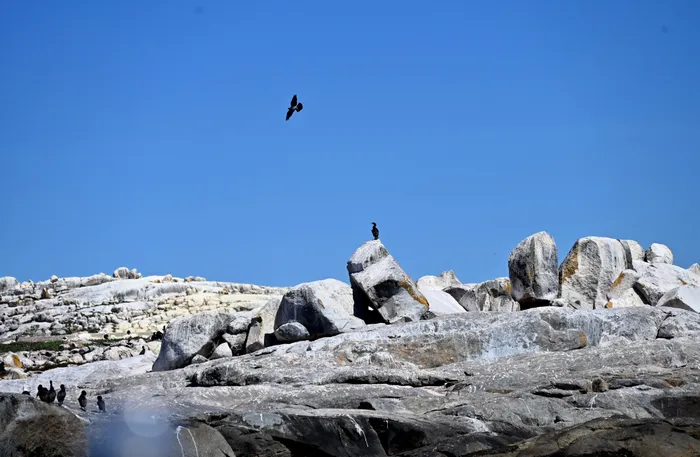West Coast National Park to see R31 million infrastructure injection to boost conservation

The South African National Parks, SANParks, carried out a field trip of the West Coast, focusing on marine conservation, anti-poaching, tourism, park management and infrastructure. Picture: Ayanda Ndamane / Independent Newspapers
Marine Conservation on conservation on the West Coast has been given a major boost with a R31 million upgrade injection for the West Coast National Park.
Sites on the West Coast that are favourites among tourists include the Seeberg Viewpoint, Kraalbaai, and the three marine-protected areas (MPAs), which has a focus on bird breeding, some of which are endangered species like the Cape Cormorant.
On a site visit this week, teams were placed on rubber ducks and headed out to the lagoon and the mouth of the ocean, showcasing the diverse bird populations such as the gannet, Cape cormorants and pelicans.
A designated bird project is undertaken by the SS National Park's West Coast team to ensure that endangered species are protected against human life and even bird life itself.

The upgrade is expected to boost the West Coast's economy and tourism facilities and will boast an upgraded R27 entrance gate at the national park to facilitate and accommodate the large volume of visitors during peak seasons.
During the 2023/24 peak holiday season, the park saw 12800 visitors.
The upgrade will see recreational facilities such as a putt-putt park to go-carts and restoration and refurbishment of its Geelbek restaurant and the West Coast National Parks Conservation office.
As teams were taken along the waters, construction sites were shown at Kraalbaai where ablution facilities are to be completed.
Tenders will get under way later this month while sites will be inspected on March 26.
A compulsory clarification meeting will be held with representatives.

Charlene Adams of the West Coast National Park, who took the team to Seeberg Viewpoint, said current infrastructure could not accommodate the large volumes of tourists.
“In recent months and years we have noticed a definite increase in visitors to the park. In the past festive season from December to January, we had about 12800 visitors.
“When we have our flower season in spring we also see an influx of visitors. Last year, in the flower season, we had about 65000 visitors.
“With the increase in numbers, we see pressure on our resources, specifically our infrastructure. The organisation has made an application for this special project to upgrade the organisation.
“This is to enhance the visitor experience within the park. For West Coast we were lucky to receive an allocation of R31m.”

Pierre Nel, senior section ranger in the park, said much is being done to protect bird species who even feed on one another.
He said the West Coast, which was home to three so-called islands known as Marcus, Malgas which is 8.3ha and Jutten Island, were part of the MPA and were part of a bird-monitoring project.
“These islands are all part of the national park. The reason they were declared is because of the pelagic birds breeding on them such as the Cape cormorant.”
The park is home to over 250 bird species, over a quarter of South Africa's total.
Nel and his team said during the breeding season they had to stay on the island for seven days and prevent pelicans from feeding on other bird species eggs.
They said scientists have now confirmed the bird population is back to 50 000.
Irene Simovich, project manager for Vision 24, SANParks, said a year ago they invited the nation to join them on a transformative journey into the future, to reimagine conservation for people and for nature.
“Planning is a bit like looking into a crystal ball,” she said.
“Disaster and collapse. Climate change wipes out species at an unprecedented rate and we can do nothing; our parks are invaded and plundered.”
She said 16.65% of South Africa's 121 million hectares of land are under conservation estate (just over 20 million hectares) and to reach the global 30 by 30 target of 30% of land, South Africa needs to add another 16 million hectares (terrestrial) to the conservation estate.
SANParks manages 20 national parks (about 4.2 million ha) and 10 MPAs (about 0.4 million ha) accounting for 40% of SA's terrestrial, and 5% of its marine-protected area.
“National parks have the highest order status requiring parliamentary approval for protection. SANParks needs to consider how to contribute to this,” Simovich added.
“We need to remove physical barriers and obstacles and create living landscapes.
“Living landscapes are large (mega) landscapes that can be inhabited, complex in terms of ownership, spatial patterns and jurisdictions, stakeholders, and level of biodiversity, and have varied objectives and aim to achieve a variety of goals,” Simovich added.
Related Topics: